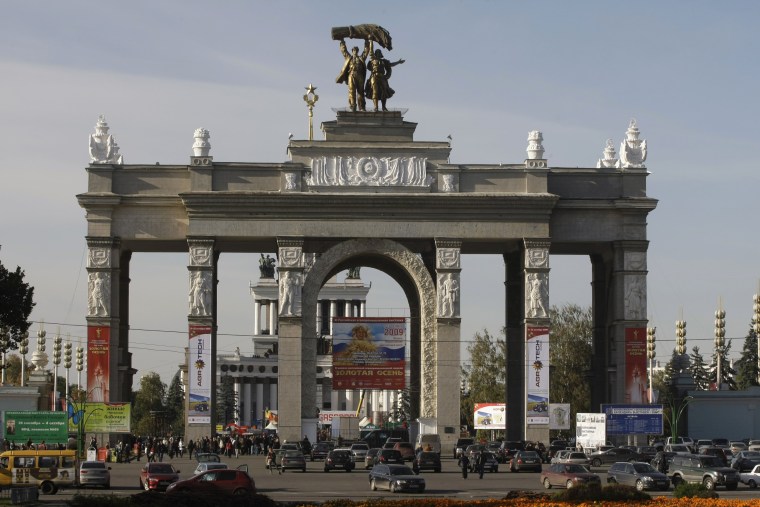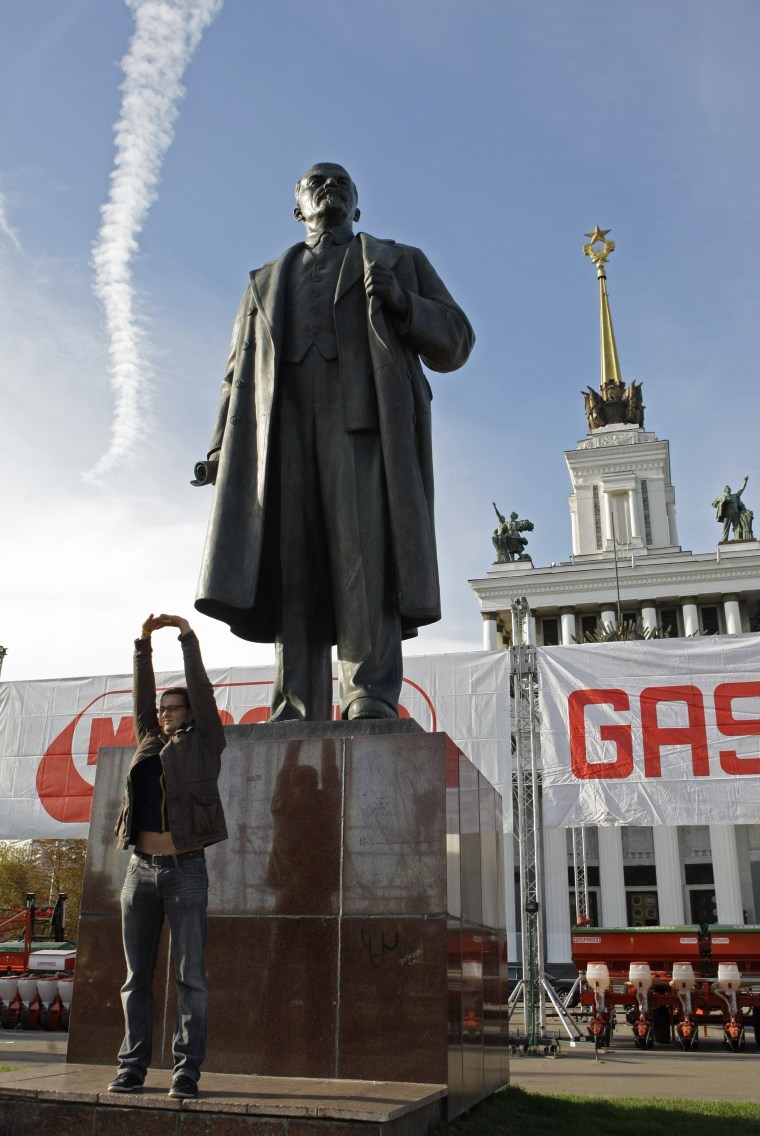Tourists at the souvenir stands on the edge of Red Square smirk and chuckle as they buy T-shirts emblazoned with Lenin's glowering visage and Soviet propaganda posters. But 20 years ago, the Soviet Union was no joke.
For a history-minded visitor, Moscow may be one of the world's most challenging destinations. In a city now full of consumer goods, one of the hardest things to find is a sense of how bleak life was under the hammer and sickle.
Unlike Rome or Athens, where the tourist is called upon to imagine the glory that once was, in Moscow you have to visualize what wasn't there. Walk into a food store and imagine the shelves empty; picture the store without a clever name or attractive logo — its sign would have read only “meat” or “milk” or “products.”
These days it's unlikely that one's tour guide briefs the secret police at the end of the day. Your hotel may not be cute or comfy, but it's probably not overtly scary like the Rossiya, a signature Soviet monstrosity that's now a vacant lot. In a way, this may be kind of a disappointment: Going to the Evil Empire had more cachet than a trip to the Overpriced Capital.
Nonetheless, there are a few places where visitors can feel like the clock's been rolled back to long before the Berlin Wall fell, and get a small taste of totalitarianism, of how the Soviet system quietly bullied even its most submissive citizens.
The most potent site is Lenin's Mausoleum, the epicenter of the overwhelming blind devotion to a man whose every utterance was treated as revealed word. Despite repeated suggestions that it should be closed and Lenin's mummified corpse buried, the mausoleum is still open 15 hours a week.
And it's still a profoundly unsettling experience. Guards take umbrage at any even mildly disrespectful behavior, admonishing a recent visitor to take his hands out of his pockets. The corpse, under a glass cover, shows a sickly white face set off with garishly rouged cheeks. Visitors get only about 30 seconds to take a look as they walk by, the point apparently being to make a show of devotion rather than to reflect on what Lenin did.

As institutional and deferential as this may seem, it's less so than it used to be. The line of pilgrims used to snake across Red Square; now, visitors marshal in an adjacent alley, as if setting out for a slightly shameful activity.
Soviet authorities took every opportunity to lecture their people on the regime's purported nobility and accomplishments and to exhort them to live up to the image — not only in words but in images. Nowhere is that more visible today than in the older stations of Moscow's subway, masterpieces of Stalinist all-encompassing propaganda.
The Kievskaya ring-line station is a favorite of connoisseurs. Well-executed mosaics of diligent tractor-driver brigades and collective-farm workers dancing at harvest-time festoon the pillars. Another shows Lenin editing the revolutionary newspaper Iskra, and nearby some apparatchiks open a huge hydroelectric plant, their faces showing benevolent expressions that may not have been seen in real life.
The station called VDNKh isn't much for such decor, but what's above it is perhaps the ultimate example of Soviet propaganda kitsch. The acronym stands for Exhibition of the Achievements of the People's Economy, a 500-acre spread of huge, elaborately decorated pavilions begun during Stalin's time.
Although many are less than 60 years old, the pavilions' architecture is rooted in styles from centuries past, resembling pashas' palaces and Egyptian temples; one even seems to combine elements of mosques and cathedrals. But look closer and see the hammers-and-sickles entwined in the filigree; the friezes and statues are not of gods and mythical heroes, but of workers.
The anachronistic architecture reflects the conservative, even reactionary, strain within Soviet authorities' claims to be boldly pushing into the future. Instead, the future came to VDNKh and worked strange changes.
After the Soviet collapse, most of the pavilions were stripped of their propaganda exhibits and turned over to small vendors. The central pavilion — a classic Stalinist Gothic tower — still contains a Russian ethnographic exhibition, but it's difficult to find amid the kiosks selling cheap watches, glow-in-the-dark panties and other cheerfully tacky goods that would have given a dour apparatchik a fit.
None of these sites can replicate the Soviet experience for more than a few moments, but for many visitors that's more than enough.
“I don't think I would have liked it here then,” said Assumpta Abondo, a visitor from Dubai doing some desultory shopping at a souvenir stand.
For her companion Yasmin Mazouzi, the problem isn't that the Soviet experience is hard to find, but that it still seems so prevalent.
“The people are rude, policemen stare at you,” she said. “You're a bit scared, really.”
